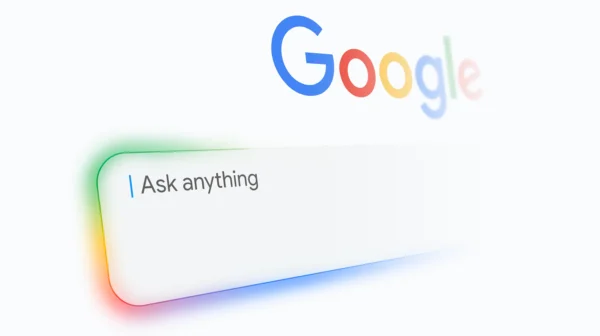Latest organic search news – July 25
We’ve compiled the essential updates from Google and the broader world of search from the last month – keeping you up to date with everything you need to know.
TL;DR
- LLM search traffic is growing, but still only accounts for ~1% of total. Google is far from dead.
- Google’s June core update reminds us that traditional organic signals still matter.
- LLM-driven search (like AI Mode) is changing how visibility works. Think sub-queries, inclusion, and signals, not just keywords.
- ChatGPT Path and new tools offer insight into what sources these systems use and how to earn a place in their answers.
- Being visible is no longer enough. You need to be structurally unmissable.
Explore this content with AI tools:
Covering
- AI Search traffic ~1% of total
- June core algorithm update
- Query fan-out and AI Mode
- Search is becoming less transparent, and that changes the game
- See exactly what ChatGPT is searching for and the sites it visits when providing an answer
- Freelancers and industry outlets are rising in PR influence
- The CMA sets out plans for Google to work more fairly with publishers
- Google is testing out “preferred sources” – and it could reshape visibility
- YouTube brings AI Overviews to search
- Another note on the importance of Social/Community visibility
- Stay ahead in SEO with Distinctly
AI Search traffic ~1% of total
Of course AI traffic is growing – we are seeing that across all of our clients. Our Distinctly line, though, is that while it’s clearly important to optimise for visibility in LLM-driven answers, let’s not throw Google Search out with the bath water.
This post from Glenn Gabe supports what we’re seeing in our own data: referral traffic from LLMs (AI Overviews, AI Mode, etc.) still makes up a tiny share of total traffic. Typically, that’s around 0.5 to 1% and in 99%of cases, it’s much less than what we see from Bing!
Typical client traffic distribution below:
So yes, diversify your digital presence and energies. Do all you can to become visible within AI models and answer engines – who knows where we will be in a years’ time re. user numbers… But don’t forget the fundamentals. Your site’s quality impacts Google visibility, so if you’re chasing LLM inclusion through black hat SEO tactics (which right now sometimes seem to work), you may be putting your Google visibility at risk.
June core algorithm update
Following on from the above, on June 30, Google announced its latest core update.
These happen ~4 times per year, with the last one coming in March.
Core updates impact all areas of Google search – including AIOs and AI Mode – so there could be some more interesting changes than usual on the way over the coming three weeks.
Query fan-out and AI Mode
A month on from AI Mode’s release, we’re starting to get a clearer sense of the underlying concepts and what it might take to stay visible in this evolving search landscape.
One of the most important concepts to understand is query fan-out.
In AI Mode (and other LLM-powered search formats), search is no longer about matching a prompt to a single result. Instead, one query is broken into many sub-questions to better understand the user’s intent. This process is known as query fan-out.
So rather than asking “How do I rank for keyword X?”, we should be thinking:
- What sub-questions might this prompt trigger?
- What intents sit behind it?
- Is my content structured to help LLMs identify and stitch relevant answers?
Understanding query fan-out is essential for both SEOs and stakeholders because it changes what gets surfaced in search, and who is visible.
To see how this plays out in practice, the explainer table below (inferred from this Growth Memo post) breaks down how a single query is deconstructed, what SEOs can do about it, and what types of intent need to be covered.
So evolution not revolution. At Distinctly, we’ve been aligning with these principles for some time, shaping content around user intent, semantic clarity and structured delivery. But with query fan-out and AI-modeled search accelerating, it’s now critical that all content is created with both machine inference and real user needs in mind.
Search is becoming less transparent, and that changes the game
Jono Alderson’s post “Everything is now opaque” is one of the clearest and most powerful breakdowns of what AI is doing to marketing, and why so many of our old tools no longer help us.
The core idea?
We’re not optimising for users anymore. We’re trying to be included in systems that decide on their behalf.
That means:
- Visibility without attribution is the new norm
- Feedback loops are gone, and “comfort metrics” give the illusion of insight
- The real game is shaping how models think, not just where brands appear
“You won’t get a warning. You won’t see a drop in rankings. You’ll just stop being included.”
To help distil the piece, I pulled together two slides summarising some of the most important points, especially relevant for anyone working on visibility, attribution, or LLM strategy:
This is required reading for anyone in SEO, content, or brand strategy. If you only read one thing this month, make it this.
See exactly what ChatGPT is searching for and the sites it visits when providing an answer
Ayima has launched a free Chrome extension called ChatGPT Path, which reveals the search queries, internal logic, and source URLs GPT uses to generate answers.
For SEOs and digital PRs, this is a goldmine. We can now:
- See exactly which pages and domains GPT pulls from
- Identify DPR placement opportunities by spotting recurring sources
- Uncover content gaps or angles
I have been playing around with this for a week now and it’s the most helpful tool I’ve used in recent times. Not only does it save time from doing it manually it provides even more detail and context around how GPT interprets your request.
This kind of insight is so useful if you’re trying to earn your spot in LLM-powered answers as if you are not being featured in the places it frequents, you are going to struggle for visibility.
Freelancers and industry outlets are rising in PR influence
In BuzzStream’s June PR Engagement Study, data confirmed something that many in the DPR industry may have already felt anecdotally: freelance journalists and local titles are becoming increasingly valuable targets for media outreach, as they are often more open to receiving pitches than their national counterparts.
Freelance journalists are playing bigger roles in setting news agendas – and the results of the study show that they’re often more engaged, responsive, and likely to champion ‘niche’ stories.
This shift challenges the hierarchy of media value. Smaller news outlets, such as industry sector publications, might not always offer the highest domain authority – but they can be a way to insert yourself into a relevant conversation and importantly, in a relevant publication, providing the opportunity for deeper storytelling, recurring opportunities through relationships built on trust and expertise, and more authentic connections with audiences that are readily engaged with key topic areas. Sector expertise is great for LLM inclusion, too.
Working with Distinctly gives you access to the UK’s top local titles and journalists so get in touch if local visibility is something you need further support with.
The CMA sets out plans for Google to work more fairly with publishers
The Competition and Markets Authority (CMA) recently announced plans to help regulate how Google is handling publisher content – with the main aim being to give newsrooms more control and visibility over how their work appears in the search engine.
This is a particularly important shift as the search landscape becomes increasingly AI-driven, allowing publishers to ‘opt out’ of AIOs without removing the entire site from the search. This follows complaints of articles summarised in an AI Overview, subsequently declining click-through rates.
From a digital PR perspective, this is an inflection point; coverage needs to be structured and well attributed, especially when taking into account AI summarisation (which means chasing for amendments/correct attribution is hugely important).
Google is testing out “preferred sources” – and it could reshape visibility
Google’s recent test of allowing users to select their own preferred news sources for ‘Top Stories’ hints at a broader shift towards personalised and curated search engine results driven by user choice and trust rather than algorithmic authority.
It’s one of many features focused on personalisation that Google has announced recently, and this signals a future where brands can’t rely solely on ranking highly – they need to be chosen by their audiences.
For digital PR strategies, this means that brands need to continue to build ongoing credibility, familiarity, and loyalty across multiple touchpoints but most importantly, the ones where their customers are hanging out the most online.
YouTube brings AI Overviews to search
Not exactly, but YouTube is testing an AI-powered search carousel for Premium users in the US. It highlights clips and generates short summaries for topics like travel, shopping, and things to do, similar to Google’s AI Overviews.
For example, if you search for something like “best beaches in Hawaii,” you’ll see an AI-generated carousel highlighting clips from videos showcasing the best snorkel spots and volcanic beaches, alongside descriptions and more videos to help you plan your vacation.
This could reduce click-throughs for creators, just like AI answers in Google Search have impacted publishers or it could amplify your video reach further should you be included. I guess the main concern viewers would have is the validity of the video content being shown in a world where it is getting harder and harder to differentiate between legitimate content and AI-produced content.
A quote I saw recently on X was about how someone would happily pay $20 per month for a social media channel that contained zero AI-content. I can’t find the tweet now but I am inclined to agree!
A side note on Youtube – if you want an idea on how Google search could end up looking, with regards to complete personalisation of UI and results shown, YouTube’s homepage is a fair bet. Content tailored exactly to your browsing needs, to the degree that you often don’t need to search at all.
Another note on the importance of Social/Community visibility
From this edition of the newsletter. We have covered the AIO usability study before, but just to reiterate; the most common pattern of behaviour monitored was that after reading an AIO, users would then go to Social/Forums to see whether real people agree.
So it’s not enough to be featured in AI answers if real-world signals don’t back you up.
You could argue that strong social proof is needed to get featured in the first place, but it’s still possible to game that system.
The takeaway: if your brand is invisible on social or community platforms, you’re missing from the final decision-making process.
We have just launched this offering at Distinctly, so give us a shout if organic social media strategy is an area you want support in!
Stay ahead in SEO with Distinctly
Enjoyed this roundup? Stay updated with the latest Organic trends, tips, and exclusive insights by subscribing to our newsletter.



